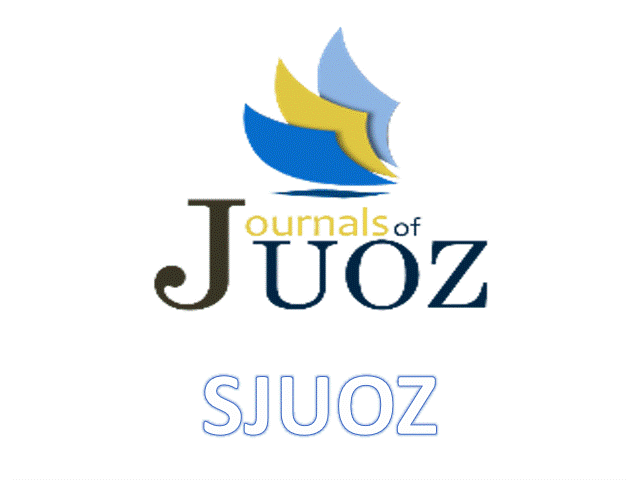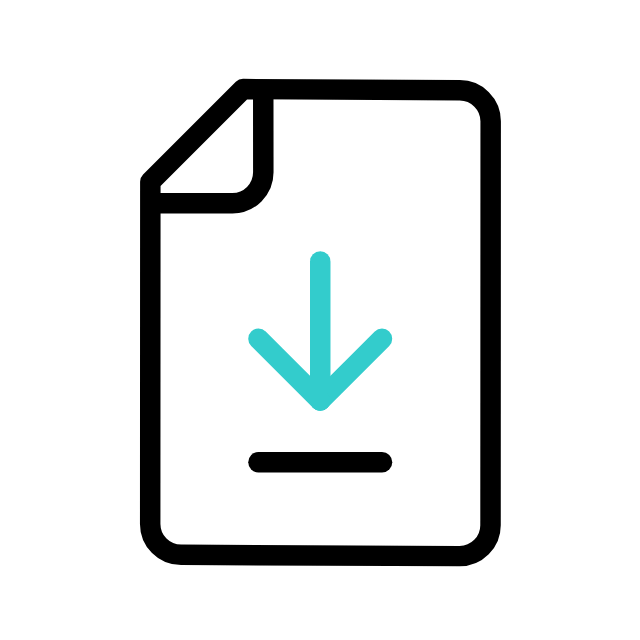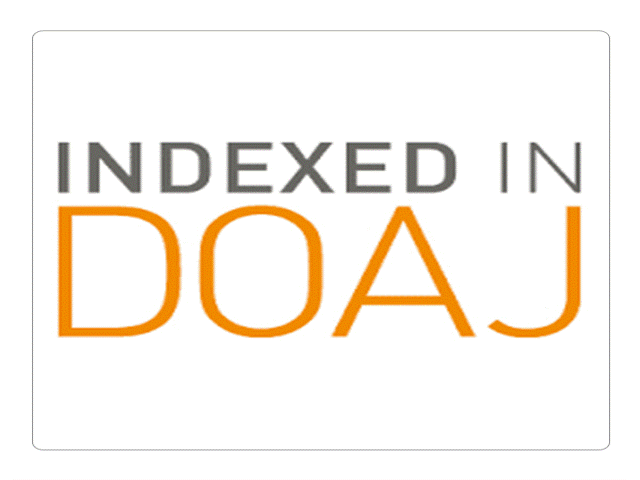Assessment of Well Water Quality for Drinking Purposes Within Selevania District, Zakho City, Kurdistan Region / Iraq
DOI:
https://doi.org/10.25271/sjuoz.2021.9.3.813Keywords:
Heavy metals, well water, drinking water quality, Zakho cityAbstract
The world’s major sources of drinking water are groundwater particularly wells water. In the present study, the quality of the wells in the 10 villages nearby the city of Zakho were selected for investigation and their suitability for drinking purposes. All the well water samples were analyzed for 11 chemical and physical analysis including dissolved oxygen, total hardness, chloride, total dissolved solids, electrical conductivity, pH, sulfate, and four heavy metals, such as Cu, Fe, Pb, and Zn using standard methods. The results showed that the value of heavy metals in well water samples were in these ranges: Zn (0.027± 0.004 to 0.005 ± 0.007) mg/L; Fe (0.0109 ± 0.035 to 0.183 ± 0.061) mg/L; Cu (0.001 ± 0.022 to 0.025 ± 0.023) mg/L; Pb (0.045 ± 0.015 to 0.069 ± 0.096) mg/L. The range of physical and chemical parameters were; pH (7.1 to 8.3), EC (411 to1579 µS/cm), TDS (263 to 1010 mg/L), Total Alkalinity (287 to 584 mg/L), Total hardness (176 to 848 mg/L), Chloride (11.6 to 56.9 mg/L), calcium (80 to 673 mg/L), dissolved oxygen (6.1 to 8.7 mg/L), sulfate (10.3 to 42.5 mg/L) and temperature (17.0 to 23.4°C). The results were compared with international standards and showed that the mean values of total hardness and TDS in locations betas, Bezehe and Dolla are ranged from (827.13 ± 5.330), (544.25 ±3.178) ,(782.63 ± 3.257), (930.38 ± 3.545), (675.75± 3.639) ,( 996.25 ± 3.245) mg/L respectively, were found to be higher than WHO water standards, and unsuitable for drinking use. The results have proven the presence of heavy metal as especially lead, Zn, Cu, and Fe have been containing in the study area. Other parameters were within (WHO) drinking water standards. In conclusion, the other sites of well water sources of the Selevania region are suitable for drinking purposes.
Downloads
References
Adam Khalifa Mohamed1,2,∗, Liu Dan1, Song Kai1, Elsiddig Eldaw1,2, and Salma Abualela2 2019Evaluating the suitability of groundwater for drinking purposes in the North Chengdu Plain, ChinaE3S Web of Conferences 81, 01006 (2019
Aniqa Batool,1 Nafeesa Samad,1 Syeda Sabahat Kazmi,2 Muhammad Asad Ghufran,3 Saima Imad,2 Mateen
Shafqat,1 Tariq Mahmood 2019 Spring water quality and human health: an assessment of natural springs of margalla hills Islamabad zone- Volume 2 Issue 1 – 2018
Baskoro Rochaddi1* , Warsito Atmodjo1 , Alfi Satriadi1 , Chrisna Adhi Suryono2, Irwani Irwani2 and Sugeng
Widada 2019 The Heavy Metal Contamination in Shallow Groundwater at Coastal Areas of Surabaya East Java Indonesia Jurnal Kelautan Tropis Maret 2019 Vol. 22(1):69-72
Durgasrilakshmi Hari 2019 Groundwater Quality Assessment in Kattedan Industrial Area, Hyderabad India International Journal of Recent Technology and Engineering (IJRTE) ISSN: 2277-3878, Volume-8 Issue-1, May 2019
Hanumantharao.C, Koteswararao.M, Kalyan.T 2019 Groundwater Quality Assessment for Drinking Purpose in Vijayawada Region, Andhra Pradesh, India International Journal of Engineering and Advanced Technology (IJEAT) ISSN: 2249-8958, Volume-8 Issue-5, June 2019
Jabal MSA, Abustan I, Rozaimy MR, El Najar H (2015) Groundwater beneath the urban area of Khan Younis City, southern Gaza Strip (Palestine): hydrochemistry and water quality. Arab J Geosci 8:2203–2215
Mohamed Hanipha M* and Zahir Hussain A 2017 Seasonal Variations of Groundwater Quality in and around Dindigul Town, Tamilnadu, India Pelagia Research Library.Der Chemica Sinica, 2017, 8(2):235-241
Mustafa I Umer1 , Payman A Abduljabar2 and Newar
A M Hamid2 2018 Assessment of Ground Water Pollution by Heavy Metals and Anions in Kwashe Industrial Area, Duhok City, Kurdistan Region. Iraq IOP Conf. Series: Materials Science and Engineering 454 (2018).
Neelam Bunkar1* and Vinod Kumar 2019 Water Quality Index for Assessment of Groundwater Quality Parameters in Udham Singh Nagar District of Uttrakhand Int.J.Curr.Microbiol.App.Sci (2019) Special Issue-8: 68-72
Nushe Lajçi1,∗, Milaim Sadiku1, Xhemë Lajçi2, Blerim Baruti1, Mehush Aliu1 2017 Assessment of Physico-Chemical Quality of Fresh Water Springs in Village Pepaj, Rugova Region, Kosova J. Int. Environmental Application & Science, Vol. 12(1): 73-81 (2017)
Onuorah Samuel*, Igwemadu Nkiruka, Odibo Frederick 2019 Effect of Seasonal Variation on the Physicochemical Characteristics of Borehole Water in Ogbaru Communities, Anambra State, Nigeria Natural Resources and Conservation 7(1): 1-8, 2019
Punia A. 1,* , Siddaiah N.S.2 , Bharti R.1 2019 Groundwater Quality and Hydrogeochemical Characterization of Khetri Copper Mining Region, India 16 th International Conference on Environmental Science and Technology Rhodes, Greece, 4 to 7 September 2019
Snehalata Kotagi 1, J K Sandhya Kiran 2018 Physico-Chemical Analysis of Ground Water International Journal of Innovative Research in Science, Engineering and Technology Vol. 7, Issue 1, January 2018
Results and Discussion
The six elements studied in this research
namely: Manganese, Iron, Zinc, Cadmium
Copper and Lead have Maximum Pollutant
Levels of 0.050 mg/L, 0. 300 mg/L ,3.000 mg/L,
0.003 mg/L, 2.000 mg/L and 0.010 mg/L
respectively (19, 20). All the 20 tests were
named appropriately and investigated for the
metal content. Sample were analyzed 5 times
(n=5) the trace metal concentrations of six in
different parts of the study zone has been
presented in Table 1,2.
Results and Discussion
The six elements studied in this research
namely: Manganese, Iron, Zinc, Cadmium
Copper and Lead have Maximum Pollutant
Levels of 0.050 mg/L, 0. 300 mg/L ,3.000 mg/L,
0.003 mg/L, 2.000 mg/L and 0.010 mg/L
respectively (19, 20). All the 20 tests were
named appropriately and investigated for the
metal content. Sample were analyzed 5 times
(n=5) the trace metal concentrations of six in
different parts of the study zone has been
presented in Tabl
Tajinder Kaur1 • Renu Bhardwaj1 • Saroj Arora 2016 Assessment of groundwater quality for drinking and irrigation purposes using hydrochemical studies in Malwa region, southwestern part of Punjab, India Appl Water Sci DOI 10.1007/s13201-016-0476-2
Wajid Ali , Muhammad Nafees , Syed Ali Turab , M. Younis Khan , Khaista Rehman 2019 Drinking water quality assessment using water quality index and geostatistical techniques, Mardan District, Khyber Pakhtunkhwa, Pakistan Journal of Himalayan Earth Sciences Volume 52, No. 1, 2019 pp. 65-85
WHO (2012)., Guidelines for Drinking-water Quality., Second edition, Addendum to 2, Health Criteria and Other Supporting Information
WHO (2011)., Guidelines for Drinking-water Quality., Second edition, Addendum to 2, Health Criteria and Other Supporting Information
Yousra Souidi (1,2), Hanen Jarray (1), Hafedh Rigane (2), Raul Carrey Labarta (3), Manuela Barbieri (3), Albert Soler Gil (3), Faiza khalfalli (4), and Mohamed
Moussa (1 2019 Evaluation of groundwater quality and its suitability for drinking and irrigation purposes: Case of Skhira aquifer Sfax –TunisiaGeophysical Research Abstracts Vol. 21, EGU2019-1893-2, 2019
Downloads
Published
How to Cite
Issue
Section
License
Copyright (c) 2021 Musher R. A. Al- Barwary

This work is licensed under a Creative Commons Attribution 4.0 International License.
Authors who publish with this journal agree to the following terms:
- Authors retain copyright and grant the journal right of first publication with the work simultaneously licensed under a Creative Commons Attribution License [CC BY-NC-SA 4.0] that allows others to share the work with an acknowledgment of the work's authorship and initial publication in this journal.
- Authors are able to enter into separate, additional contractual arrangements for the non-exclusive distribution of the journal's published version of the work, with an acknowledgment of its initial publication in this journal.
- Authors are permitted and encouraged to post their work online.








